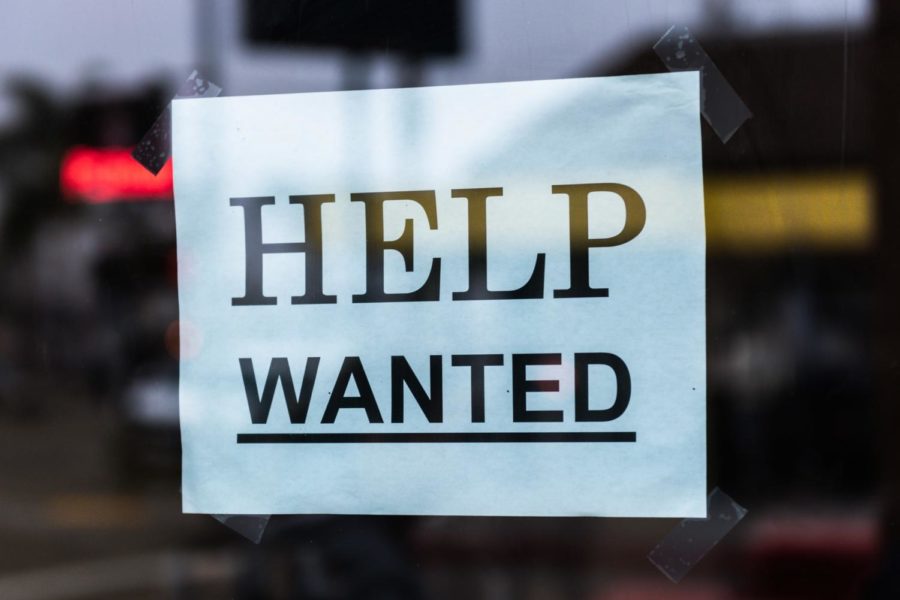Editorial: The facts behind unemployment
The ISD Editorial Board explains why people aren’t returning to work now that COVID-19 unemployment programs are ending in many states.
October 14, 2021
Editor’s Note: Editorials are representative of the views of all Editorial Board members. One or two members will compile these views and write an editorial.
Ideas are words used to describe some phenomenon, whether it be abstract or concrete. Ideas can be true, though they are not truth. They can also be false though they are not necessarily falsehoods.
How tightly we hold to an idea, how firmly we believe it to be true, has absolutely no bearing on the actual validity of that idea. Take Aristotle, for example. His idea that everything was made of earth, water, air and fire was unequivocally false. That doesn’t make Aristotle stupid, and it certainly doesn’t imply that he was pushing an elemental agenda, whatever that would be.
Aristotle was simply wrong. He had an idea that, given the present level of knowledge, was acceptable, but over time that idea was shown to be incorrect. We’ve since moved past this idea and accepted more modern ideas of what makes up everything. That is neither good nor bad. It is simply the way things go.
Let’s look at something more recent, though. As the COVID-19 pandemic overtook America in 2020, the federal government passed enormous spending bills aimed at helping Americans weather the crisis financially. Stimulus checks were sent out, and businesses and individuals alike benefited from unemployment payments justified by the sheer lack of transactions occurring across the country.
The government, under both Trump and Biden, decided it was better to keep small businesses and their employees afloat, despite being effectively closed, than to let those very same businesses and people ruin themselves financially.
As the pandemic wore on and improved in many places, businesses began to reopen or at least tried to. Often, their attempts were met with brutal supply chain problems, with a labor shortage being the most glaring issue.
And it is a labor shortage brought about by the pandemic that has continued to negatively affect businesses and the economy as a whole.
For a while, there was this idea that the government was paying people to not work. That is a fair way to characterize what are really just two conditions. People weren’t working, and the government was providing them with money.
The problem with that characterization now is that one of those conditions is no longer true. The government is no longer paying people who aren’t working (beyond what unemployment was before the pandemic). The $600 weekly payment that turned into a $300 weekly payment that some states ended months ago, as of the end of September, is no more.
So, those people may still not be working, but they aren’t getting the extra money that they had been for the last year and a half. That’s an important distinction because there still is a labor shortage. Supply chains are still far behind where they want to be.
If they aren’t getting paid, and they aren’t currently working, unemployment must be sky high then, right? Wrong. The unemployment rate has steadily declined from a peak right at the beginning of the pandemic.
If people are going back to work, then why are there still so many vacant positions? Why are supply chains still so messed up? Why can’t we get anything, from anywhere, anytime we want it? That’s how things used to be, after all.
To say people are going back to work is the reason unemployment is dropping, while logical, doesn’t paint the most accurate picture. In truth, a lot of the people who stopped working, who many assumed were taking the unemployment payments and would return to work after the well dried up, have not returned to the workforce. These people have not and will not be “going back to work.”
They are the reason there is a national labor shortage, but they are not to blame. The COVID-19 pandemic forced employees and employers to have a reckoning with how labor is supplied and used across the country.
People have decided not to return to their previous jobs for a number of reasons, with the most apt description being that they are seeking something better. Many people switched professions, especially from blue-collar jobs to gigs and other cases where they are their own bosses. Some people went to, or back to, school to further their education and enter an entirely new field. Some people said screw it to work entirely and retired.
They made these changes because they could; because the pandemic has fundamentally shifted the balance of power from employers to employees. There is an enormous demand for workers, but supply is low.
At this point, the idea that the government is paying people to stay at home stands equally with Aristotle’s idea of earth, water, air and fire. We’re at the point that a fair analysis of the many actual factors affecting the labor market is the only way to characterize our current predicament.

















